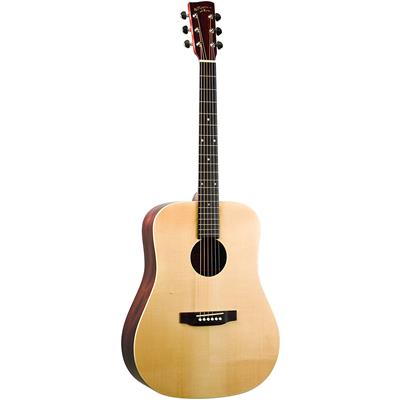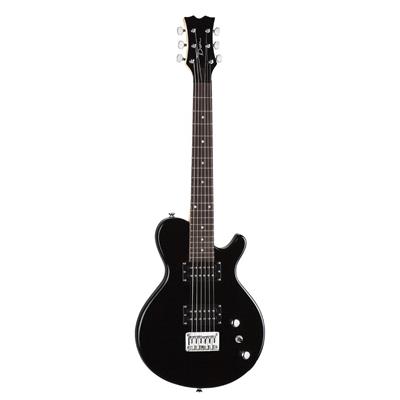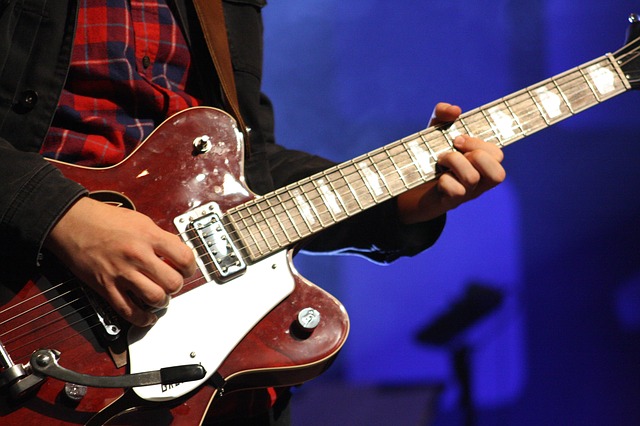There was a time when bassists were forced to use solely their instruments. Audio effects were considered a treat for electric guitarists and, thus, not suitable for low-end. Luckily, everything changed with time and nowadays we have a bass-dedicated pedal market. The development of modern technology has opened up the doors of creativity for bassists, who can employ various audio effects in their performances.
From the background position, this instrument has moved to the front with powerful and mind-blowing solos. But this would not be possible, if bassists did not know how to organize their pedals on pedalboard. The arrangement of the effects is crucially important because it largely impacts the sound you produce. If you are a newbie in the world of bass effects or have just decided to search for a new tone, this article will help you understand how everything works and what should be done in order to achieve the best results.
Before we get started, I would like to discuss a small issue that seems to be a bit contradictory among musicians. Why would someone spend extra money on a bass-dedicated pedal when he already owns guitar effects stompboxes? The answer to this question draws attention to the small details.
Even though guitar pedals might be able to do the job properly, they are not exactly the best trackers for bass frequencies. The low-end tends to be eliminated or faded out unless you have a specific device that is programmed to address this part of the sonic spectrum. A bass-dedicated effects pedal can “understand” your instrument better and add some effect to it accordingly. If you are meticulous about your sound, you have to consider investing in bass pedals.
How to build a pedalboard
Now that we have that out of the way, let’s dive into the effects pedals that would work well with bass. This might be overdrive and distortion, octave, delay and reverb, chorus, and some tone shaping options such as EQ and compressors. No matter how many of these pedals you own, you have to know how to set them up. I will cut to the chase and commence the guide of the pedal arrangement.
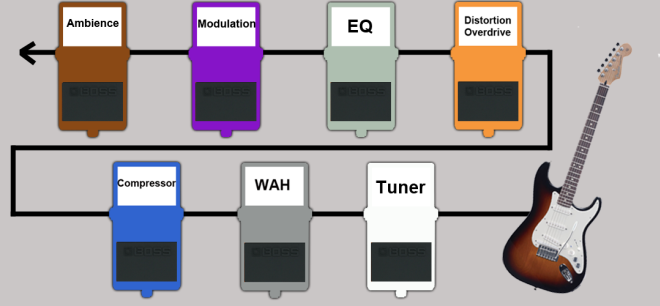
Tuners
A guitar tuner tracks the signal from your bass and makes sure that everything is in tune. Due to this principle, you will achieve the best results if you place this pedal at the beginning of your chain. The cleaner sound it receives, the more accurate tracking is. Since this unit does not really add any effect to your sound, it could be placed after any pedal. However, as I have already mentioned, in the latter case it will be hard for the tuner to operate properly. And owning one might even become nonsensical. Shove it in front of the chain and you will be ready to roll.
Bass Filters and Wahs
Filter effects modify the dynamic range of your frequencies in order to produce the desired effect. Depending on their type, you might come across the envelope, low, or high pass filters that transmit only a specific range of frequency waves. Due to this reason, they operate the best when put at the beginning of your chain. This way filter pedals will be able to discern the clean signal and deliver the most scrumptious sound.
These rules are quite similar when it comes to wahs. The difference is that wahs rely on the movements of the footswitch in order to create that “wah-wah” sound. However, they, too, belong to the front part of the chain. Feeding pristine signal into this pedal will give you deeper sweeps and a more defined effect.
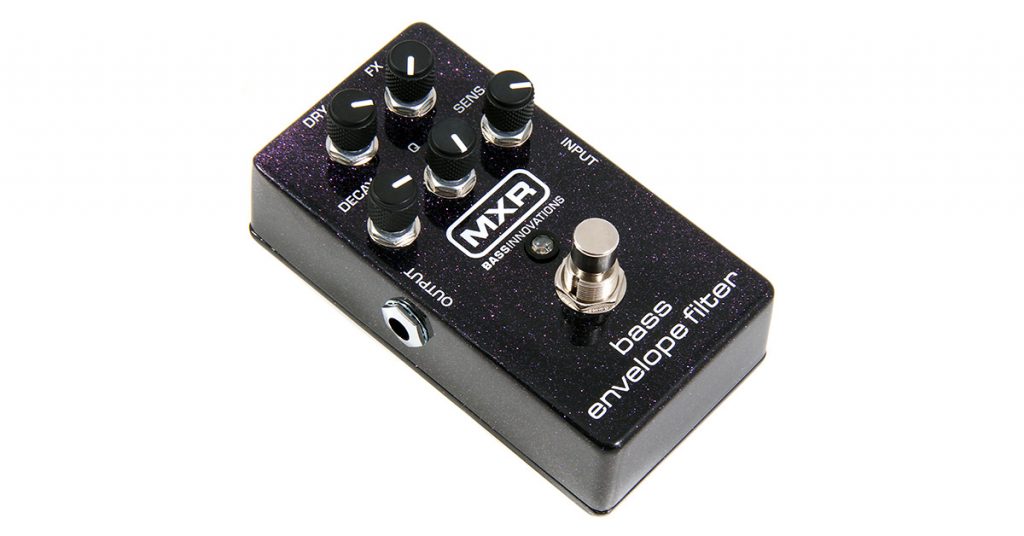
Bass Compressors
Compressors are probably the magic wands for bass players. They fall into the category of the best bass effects for a reason. They balance out any uneven frequencies in your tone, tone down the peaks and spikes in the higher spectrum, and accentuate the beautiful bottom end. Bass compressor pedals can take your performance to a whole new level. They work wonders when placed right after the filters, because this way you can feed smooth tone into other effects pedals. However, if you are willing to, you could easily put them towards the end of the chain and compress everything. It is completely up to you. Just keep in mind that you will get different results with both scenarios. Try to choose the best bass compressor pedal you can find.
Bass Octaves
Bass octave pedals split your signal in two, synthesize one piece and then mix it with the other. This way you can achieve an octave up or down effect. Bassists usually go for a sub-octave down, because if you go too low, your sound will not be audible. If you go too high, you will lose the bottom end. In order for this pedal to operate correctly, it must be able to track your signal perfectly. This is why it is a good idea to place them towards the front of your chain, right after the compressor. The octave pedal will receive the purest sound and be able to do its job more elaborately.
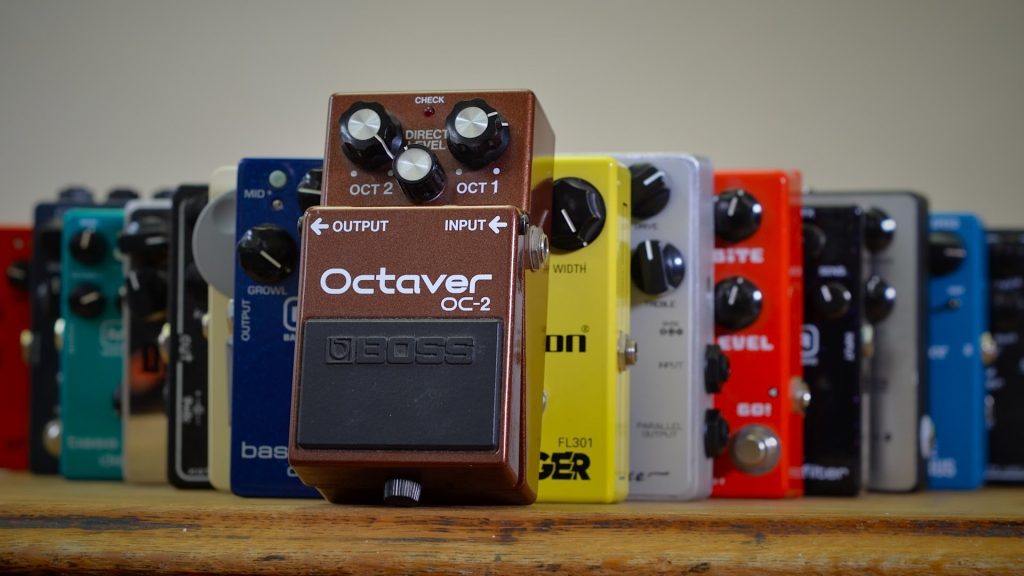
Bass Distortions, Overdrives and Fuzzes
You know we are talking about the extreme girth when we put distortion and bass in the same sentence. In my book, this two get along like a house on fire. Distorting the bottom end can produce the most earth-shattering sounds, but you have to know the perfect recipe. One of the most important ingredients is, of course, the placement. Distortion, overdrive and fuzz work perfectly when you feed compressed signal into them. At this point, your sound is not oversaturated yet, so you let somewhat clean sound pass through these effects. This way your tone becomes multidimensional with defined character. If you own all three types of this effect, try chaining them from least aggressive to the most intense (i.e. overdrive → distortion → fuzz).
Bass Equalizers
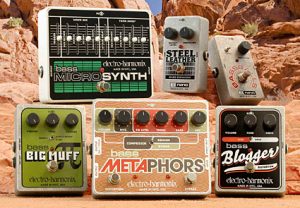 EQ pedals are yet another tone-shaping device, that can completely change your bass game. They modify the different frequencies and can attenuate your bottom end. This way your bass sound will not be lost in the mix or lose integrity while bypassing a number of units. For this very reason, they belong after distortions. EQs receive the affected signal, shape it according to your taste, define and accentuate it even more and transmit it to other effects pedals. However, you could easily place them anywhere, even at the end of the chain. In this case, you will be able to equalize the overall sound before it hits the amplifier. The choice is yours!
EQ pedals are yet another tone-shaping device, that can completely change your bass game. They modify the different frequencies and can attenuate your bottom end. This way your bass sound will not be lost in the mix or lose integrity while bypassing a number of units. For this very reason, they belong after distortions. EQs receive the affected signal, shape it according to your taste, define and accentuate it even more and transmit it to other effects pedals. However, you could easily place them anywhere, even at the end of the chain. In this case, you will be able to equalize the overall sound before it hits the amplifier. The choice is yours!
Modulation Effects
Modulation effects include all your choruses, flangers and phase shifters. These effects will give you the best results if you put them after distortions. This makes them thicker and richer and defines their character way more, plus they sound more natural. If you were to put modulation before distortion, you would receive a rather odd sound (which I am sure you would not be into). These types of effects can alter your tone significantly, so be careful with how you utilize them. And one more thing, if you have all three types of modulation in your chain, you should act the same way as you would with distortions: go from the subtlest to the heaviest (i.e. chorus → flanger → phaser).
Bass Volume Pedals
Volume pedal is the level knob of your bass in the form of the stompbox. The only thing it does is that it alters the volume of the signal. For this reason, you should consider what part of your signal you want to be affected. And this will define the placement of volume pedals. If you wish to balance out the initial signal, then they must be put in the front of the chain. However, if you want to alter the level of the overall sound, then they should go toward the end of the chain (right before time-based effects). Volume pedals are probably the most subjective ones, so decide for yourself, what suits your music the most.
Time-based Effects
These include delays and reverbs. There are a number of reasons why it is better to put time-based effects at the very end of the chain. Since both delays and reverbs replicate your signal and recreate the emulation of various environments, they should come into play after all the effects are applied to your sound. Otherwise, you would receive a rather heavy and weird tone that would not even resemble proper music. Bass and delays/reverbs are a bit odd combination, however, they can be worked out. The main thing is to NEVER place them before other audio effects and you will be good to go.
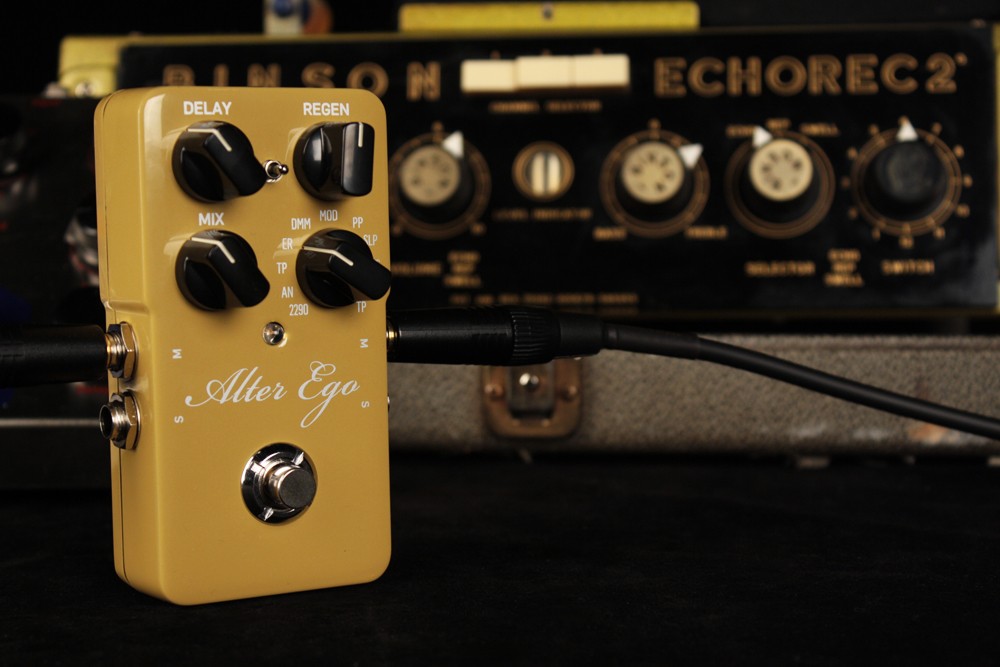
Conclusion
One last thing (and probably the most important one), do not just follow the suggestions I have provided. Keep in mind the basic rules I have mentioned and experiment with your tone. The setup that works perfectly for me, might be a crappy thing for you. The bass sound is too precious to be ruined by anything. So arrange your bass pedals on the pedalboard one way, then switch them up until you hear that perfect sound. No one can tell you how you should perform. Good luck!


